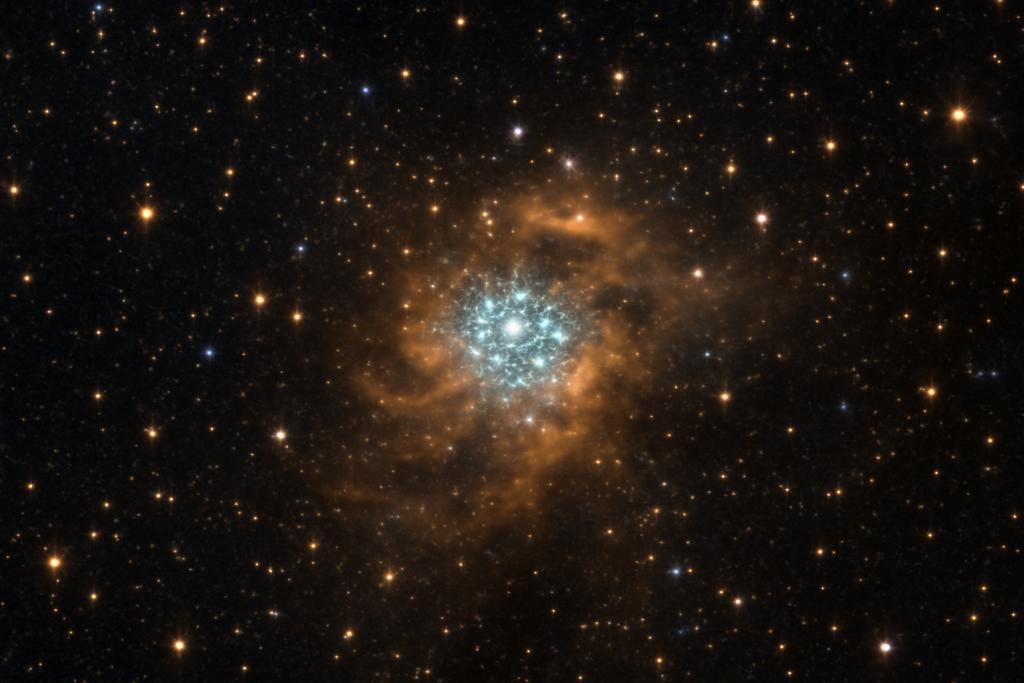The centers of galaxies are like crowded rooms where gravity is the DJ, spinning stars and gas into a complex dance. In the middle of one such room, a compact cluster near the Galactic center might cradle a quiet giant: an intermediate mass black hole, or IMBH. The question has always been whether such a black hole can hide in plain sight, washed out by the glow of nearby stars and their furious winds. A new study led by Matúš Labaj at Masaryk University, Brno, and his collaborators from the University of Toronto and other institutions, takes a big step toward answering that question. They run three dimensional simulations of a small, wind blasting cluster of six Wolf Rayet stars orbiting a hidden IMBH, inspired by the IRS 13E stellar association near Sgr A*. The result is both a cautionary tale and a roadmap for what to look for when hunting these elusive objects in the real sky.
The work sits at the intersection of stellar dynamics, black hole growth, and high energy astrophysics. IMBHs fill a predicted gap in the black hole family between stellar remnants and the behemoths that anchor galactic centers. If they exist, IMBHs could illuminate how black holes grow across cosmic time, how star clusters behave under extreme gravity, and how feedback from even a quiet black hole shapes its surroundings. The researchers behind this effort combine expertise from Masaryk University in the Czech Republic, Canada’s Canadian Institute for Theoretical Astrophysics, and allied centers, and they make the case with a level of physical realism that is rare in this part of parameter space.
Beyond simply asking whether an IMBH can be detected in a wind rich cluster, the study asks how the winds themselves sculpt the environment. Wolf Rayet stars eject gas at blistering speeds, and when you pack several of them into a sub-parsec compass, their winds slam into each other, heat up, and radiate. The IMBH sits there waiting, gravitationally pulling a sliver of the wind material inward. But the winds are loud in X rays, and their collisions are loud enough to drown out a faint whisper from an accretion flow near the black hole. The question is not just whether the black hole accretes anything, but how the entire inflow–outflow system behaves when the wind orchestra is this dense and turbulent.










